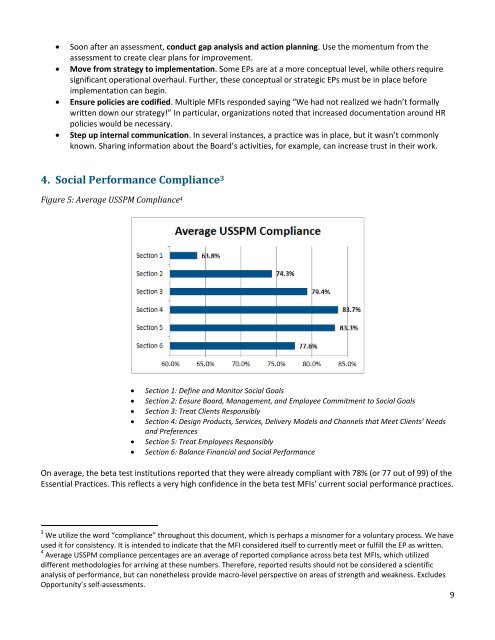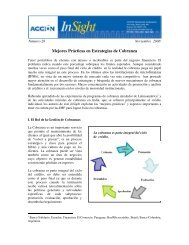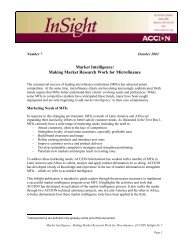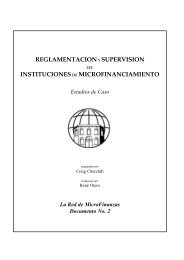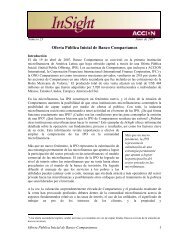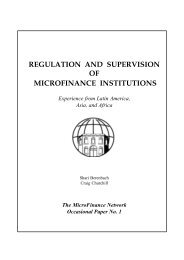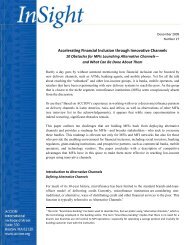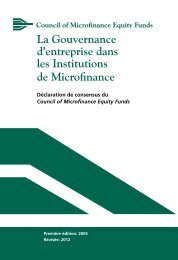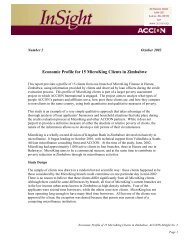the Universal Standards for Social Performance Management
the Universal Standards for Social Performance Management
the Universal Standards for Social Performance Management
You also want an ePaper? Increase the reach of your titles
YUMPU automatically turns print PDFs into web optimized ePapers that Google loves.
Soon after an assessment, conduct gap analysis and action planning. Use <strong>the</strong> momentum from <strong>the</strong>assessment to create clear plans <strong>for</strong> improvement.Move from strategy to implementation. Some EPs are at a more conceptual level, while o<strong>the</strong>rs requiresignificant operational overhaul. Fur<strong>the</strong>r, <strong>the</strong>se conceptual or strategic EPs must be in place be<strong>for</strong>eimplementation can begin.Ensure policies are codified. Multiple MFIs responded saying “We had not realized we hadn’t <strong>for</strong>mallywritten down our strategy!” In particular, organizations noted that increased documentation around HRpolicies would be necessary.Step up internal communication. In several instances, a practice was in place, but it wasn’t commonlyknown. Sharing in<strong>for</strong>mation about <strong>the</strong> Board’s activities, <strong>for</strong> example, can increase trust in <strong>the</strong>ir work.4. <strong>Social</strong> Per<strong>for</strong>mance Compliance 3Figure 5: Average USSPM Compliance 4Section 1: Define and Monitor <strong>Social</strong> GoalsSection 2: Ensure Board, <strong>Management</strong>, and Employee Commitment to <strong>Social</strong> GoalsSection 3: Treat Clients ResponsiblySection 4: Design Products, Services, Delivery Models and Channels that Meet Clients’ Needsand PreferencesSection 5: Treat Employees ResponsiblySection 6: Balance Financial and <strong>Social</strong> Per<strong>for</strong>manceOn average, <strong>the</strong> beta test institutions reported that <strong>the</strong>y were already compliant with 78% (or 77 out of 99) of <strong>the</strong>Essential Practices. This reflects a very high confidence in <strong>the</strong> beta test MFIs’ current social per<strong>for</strong>mance practices.3 We utilize <strong>the</strong> word “compliance” throughout this document, which is perhaps a misnomer <strong>for</strong> a voluntary process. We haveused it <strong>for</strong> consistency. It is intended to indicate that <strong>the</strong> MFI considered itself to currently meet or fulfill <strong>the</strong> EP as written.4 Average USSPM compliance percentages are an average of reported compliance across beta test MFIs, which utilizeddifferent methodologies <strong>for</strong> arriving at <strong>the</strong>se numbers. There<strong>for</strong>e, reported results should not be considered a scientificanalysis of per<strong>for</strong>mance, but can none<strong>the</strong>less provide macro-level perspective on areas of strength and weakness. ExcludesOpportunity’s self-assessments.9


